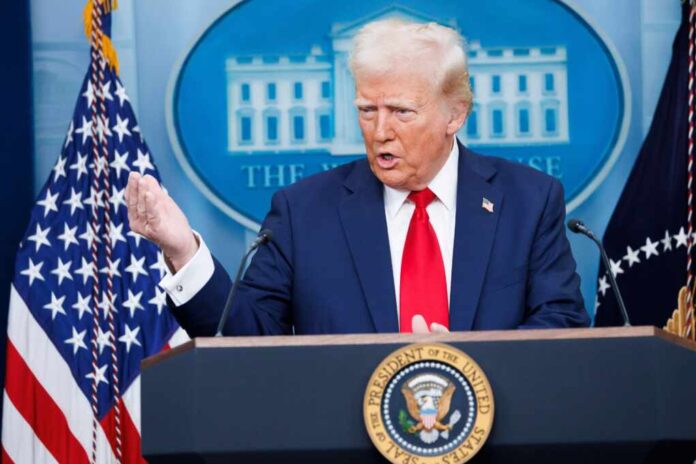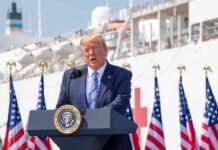
The U.S. customs revenue surpassed a monumental $100 billion, painting a picture of prosperity driven by President Donald Trump’s tariff-fueled policies.
At a Glance
- Trump’s tariffs raised the average effective U.S. tariff rate from 2.5% to 27% by 2025.
- The steel and aluminum tariffs climbed to 50% alongside a 25% car import tariff.
- Despite legal hurdles, tariffs remain active, aiming to bolster domestic growth.
- Universal tariffs are suggested as an alternative to federal income tax.
Tariffs and Economic Impact
During Trump’s second presidency, the average effective U.S. tariff rate soared from 2.5% to 27% by April 2025, propelling customs revenue to new heights. This shift underscores the administration’s ambitious attempt to revolutionize trade policies while circumventing economic norms. Although some courts deemed his use of the International Emergency Economic Powers Act unconstitutional, appeals have stalled any major rollbacks.
The overall weighted-average tariff is 29%.
The highest in over 100 years.
Bigger than Smoot-Hawley. pic.twitter.com/VtPf7fjMlZ— Geiger Capital (@Geiger_Capital) April 2, 2025
The pivotal tariffs included 50% on steel and aluminum and 25% on imported cars — strategic moves aiming to reinforce national security and domestic industry growth. The aggressive approach sparked the China–U.S. trade war, pushing tariffs to 145% on Chinese imports. Critics argue these measures stymied GDP growth and sparked a rush of stockpiling goods.
Watch a report: America’s Tariff Boom: $121 Billion Collected
Proposed Tariffs Versus Income Tax
Trump’s vision to replace federal income tax with tariff revenue has drawn skepticism due to the distinct disparity in tax base size. Economists highlight that tariffs’ limited scope won’t match the federal income collected, while Peter Navarro suggests tariffs might generate $600 billion annually, a figure contested by experts like Mark Zandi as fanciful.
A universal 10% import tariff might yield $2.2 trillion by 2034 but could slash the U.S. GDP by 0.4%, as per the Tax Foundation. The evolving landscape of tariffs, potential income tax restructuring, and their management will undeniably impact the American economy and its citizens.
Controversy and Criticism
Legal challenges to Trump’s tariff strategies question his authority under the IEEPA, though tariffs endure through appeals. Critics foresee price escalations, economic inequality, and continued judicial scrutiny. Opponents proclaim a 25% tariff grievously impacts the North American supply chain, threatening the automotive industry. Trump’s bold policy direction is consistently under a scrutinous lens as the administration endeavors to anchor America’s economic sovereignty by reshaping trade.
Tariff strategies could redirect trade routes and alter market dynamics, requiring acute attentiveness and response amid this nuanced economic environment. As Trump’s administration keeps advocating for domestic industrial fortification, the nation’s fiscal stability and international relations remain closely intertwined with these influential policies.

























